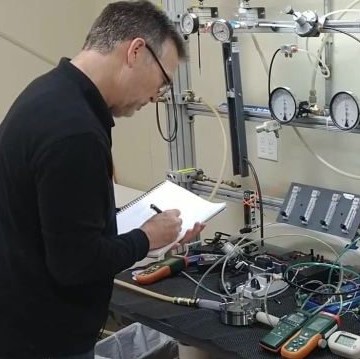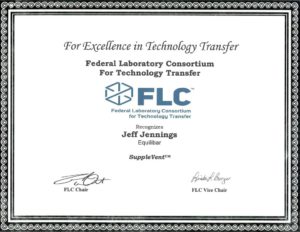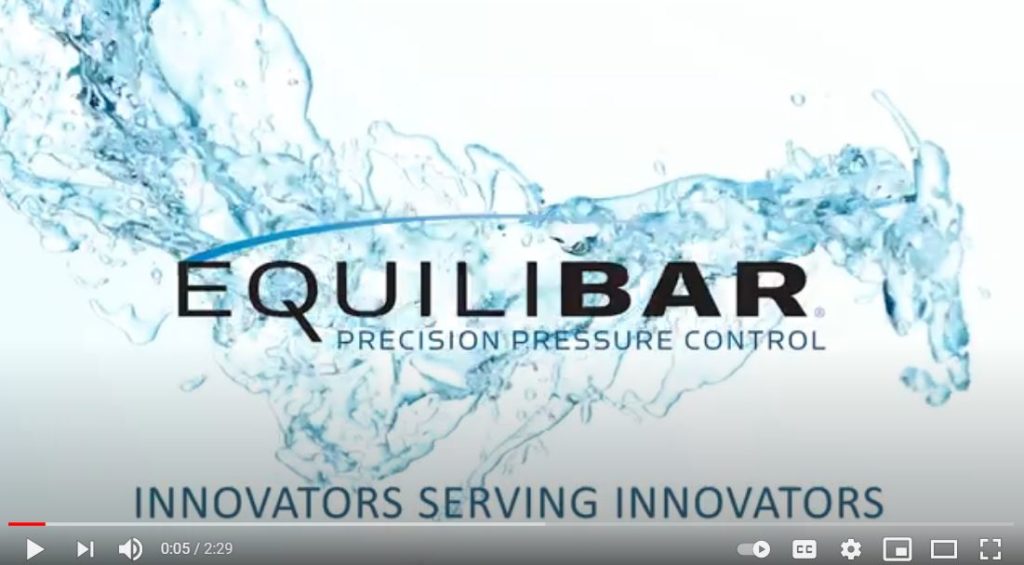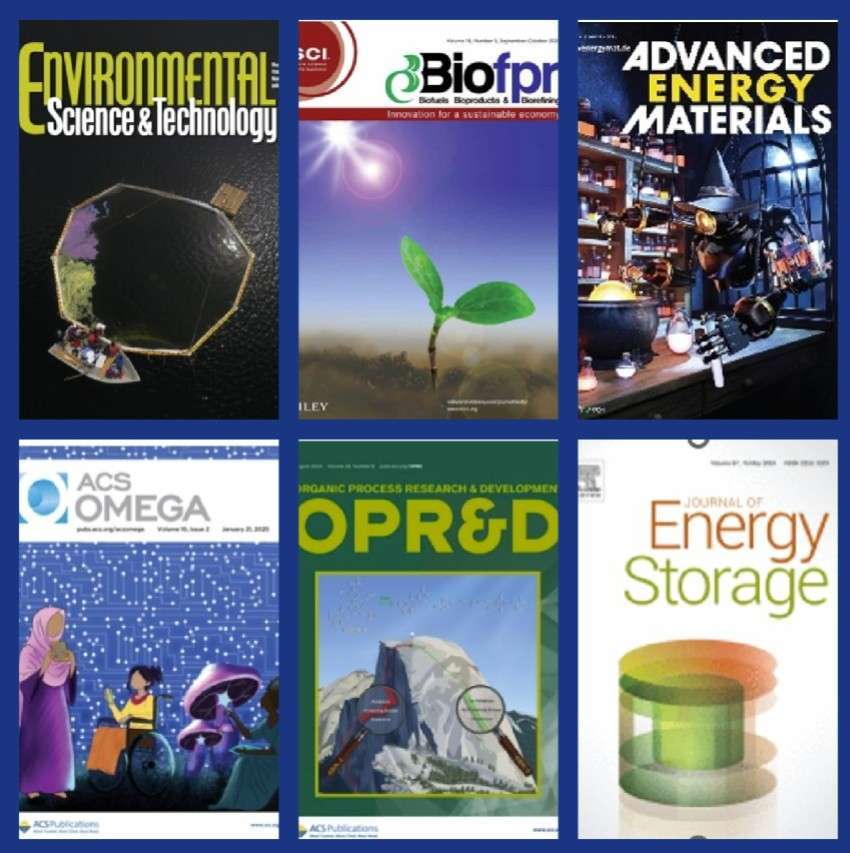Earlier this month, I got a nice surprise in the mail—a plaque from the Federal Laboratory Consortium recognizing Equilibar’s collaboration with Lawrence Livermore National Laboratory (LLNL) to develop emergency ventilator technology.
The plaque brought back many memories. Just one year ago, as COVID was quickly becoming an international crisis, the Equilibar team was working long days and evenings as part of a global moonshot effort to come up with ventilator designs that could be built with readily available parts. The SuppleVent–licensed by BiomedInnovations LLC — was the result of that effort.
The award also underscored an idea that has been brewing in my mind for quite some time. When I first started Equilibar, I wasn’t sure what the company’s role would be. Back then, our very small team took things one inquiry at a time. Most days, I didn’t think about our purpose because I was just happy to have enough work to pay the bills; however, even then, the most rewarding part of my job was getting to work with brilliant people all over the world who were trying to find solutions to difficult problems. Increasingly, I’ve discovered that this is what energizes me and makes it exciting to get up in the morning—seeing what new piece of innovation we can help bring to life to make the world a tiny bit better.
Today, I have no trouble saying what Equilibar’s role is.
We are innovators serving innovators.
What does this mean?
Equilibar didn’t make NASA’s Orion spacecraft that will be used for its Artemis Mission to Mars, but our vacuum control valves were perfect for the tricky job of bonding tiles to build the thermal protection system that protects the vehicle during re-entry.
Equilibar doesn’t make fuel cells, but our valves are being used in multiple fuel cell testing systems all across the globe because they can handle demanding flow rate requirements.
Equilibar doesn’t manufacture the SuppleVent, but our valves are described as the device’s “core technology” or its “heart.”
In each of these examples, we’ve collaborated with technical experts to provide one small but important piece of a much bigger puzzle. In the process, we’ve contributed to numerous technical advances.
Due to COVID, the collaboration for SuppleVent was largely a virtual experience, but in the fall I had the chance to meet Jack Kotovsky—one of the lead ventilator group technology managers—during a visit to LLNL. Interestingly, I was at the lab for a completely different project also involving ultra low pressure control.
(Watch the story of the SuppleVent here.)
Visiting LLNL was the first trip I had made since COVID hit, which made the visit feel much more significant than it would have during normal times. It helped me realize the importance of all our national research facilities, and I felt enormously grateful for the chance to collaborate with federal laboratories to help develop promising technology. In addition to LLNL, the Federal Laboratory Consortium includes highly esteemed institutions such as Sandia National Laboratories, NASA Jet Propulsion Laboratory, and our longtime partner, Oak Ridge National Laboratory. Over the years, we have repeatedly seen our collaboration with these institutions lead to technical breakthroughs.
University research, which was highlighted in this blog last month, is another significant market for us, as is industrial R&D. Together, these markets ensure that we virtually always have something of interest brewing. That makes my work meaningful and exciting. It gives me great pleasure to say that our entire team seems to feel the same way.
New video illustrates Equilibar’s approach
Many people have eloquently expressed how the experience of COVID has created both hardship and opportunity; tragedy and gratitude. For me, the SuppleVent experience gave me a chance to dive back into inventor mode and be part of a far-flung creative team–to collaborate, investigate and innovate together. It was a reminder of what we can do collectively when we focus and try risky things. I feel fortunate that our efforts were successful and thankful that the predicted need for ventilators did not occur. As 2021 moves forward and life begins to return to a new normal, other lofty endeavors seem more and more within reach. I look forward to working on other difficult problems such as climate change, pollution, and transportation.
COVID presented another unexpected opportunity for Equilibar when trade shows and conferences switched to virtual platforms. We found that we needed to pull together a video for a biopharmaceutical online conference booth. We had to do this quickly, and I believe this turned out to our advantage. We followed our instincts and I think the end result—our Innovators Serving Innovators video—captures what we are quite well.
I hope you have a chance to watch it.





